Related Research Articles
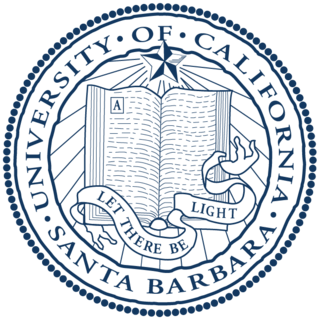
The University of California, Santa Barbara is a public land-grant research university in Santa Barbara County, California, United States. Tracing its roots back to 1891 as an independent teachers' college, UCSB joined the ancestor of the California State University system in 1909 and then moved over to the University of California system in 1944. It is the third-oldest undergraduate campus in the system, after UC Berkeley and UCLA. Total student enrollment for 2022 was 23,460 undergraduate and 2,961 graduate students.
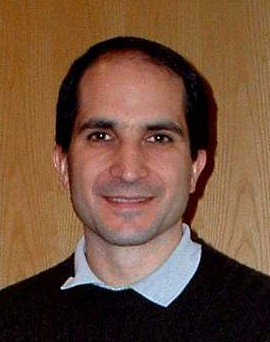
Juan Martín Maldacena is an Argentine theoretical physicist and the Carl P. Feinberg Professor in the School of Natural Sciences at the Institute for Advanced Study, Princeton. He has made significant contributions to the foundations of string theory and quantum gravity. His most famous discovery is the AdS/CFT correspondence, a realization of the holographic principle in string theory.

David Jonathan Gross is an American theoretical physicist and string theorist. Along with Frank Wilczek and David Politzer, he was awarded the 2004 Nobel Prize in Physics for their discovery of asymptotic freedom. Gross is the Chancellor's Chair Professor of Theoretical Physics at the Kavli Institute for Theoretical Physics (KITP) of the University of California, Santa Barbara (UCSB), and was formerly the KITP director and holder of their Frederick W. Gluck Chair in Theoretical Physics. He is also a faculty member in the UCSB Physics Department and is affiliated with the Institute for Quantum Studies at Chapman University in California. He is a foreign member of the Chinese Academy of Sciences.

Anthony Zee is a Chinese-American physicist, writer, and a professor at the Kavli Institute for Theoretical Physics and the physics department of the University of California, Santa Barbara.
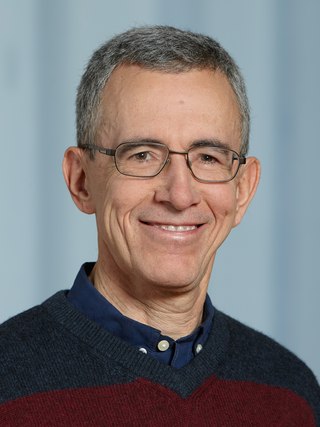
Ataç İmamoğlu is a Turkish-Swiss physicist working on quantum optics and quantum computation. His academic interests are quantum optics, semiconductor physics, and nonlinear optics.
The LeRoy Apker Award is a prize that has been awarded annually by the American Physical Society (APS) since 1978, named after the experimental physicist LeRoy Apker. The recipients are undergraduate students chosen for "outstanding achievements in physics" in order to "provide encouragement to young physicists who have demonstrated great potential for future scientific accomplishment." The Apker award is the highest honor awarded to undergraduate physicists in the United States. Generally, two prizes are awarded each year: one to a student from a Ph.D. granting institution and one to a student from a non-Ph.D. granting institution. Prior to 1995 the award was granted without institutional distinction, and a single honoree annually was common. The award consists of a $5,000 prize, allowance for traveling to the APS March Meeting to present the work, and a certificate.
Clifford Victor Johnson is a British theoretical physicist and professor at the University of California, Santa Barbara department of Physics.
David Tong is a British theoretical physicist. He is a professor at the University of Cambridge, working in the Department of Applied Mathematics and Theoretical Physics (DAMTP). He is also a fellow of Trinity College, Cambridge. His research mainly concerns quantum field theory. He is the joint recipient of the 2008 Adams Prize and is currently a Simons Investigator. He is also known for his outreach activities and for his freely available lecture notes covering a wide range of topics in physics.
Joseph Incandela is an American particle physicist, a professor of physics at the University of California, Santa Barbara and currently based at CERN, where he spent two years as the spokesperson for the Compact Muon Solenoid experiment at the Large Hadron Collider.
Ashvin Vishwanath is an Indian-American theoretical physicist known for important contributions to condensed matter physics. He is a professor of physics at Harvard University.
Antonino Neil Pappalardo is an American technology entrepreneur and the founder of MEDITECH, a supplier of information system software for hospitals headquartered in Massachusetts. Pappalardo co-founded MEDITECH in 1969, with the original name Medical Information Technology Inc. He was one of the original co-developers of the MUMPS programming language and system at Massachusetts General Hospital.
Xiaoliang Qi is a Chinese physicist and professor at Stanford University who studies quantum entanglement, quantum gravity, quantum chaos, and topological phenomena in condensed matter. He earned his B.S. in 2003 and Ph.D. in 2007 from Tsinghua University.
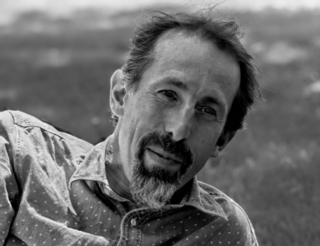
Jeremy John Baumberg, is a British physicist who is Professor of Nanoscience in the Cavendish Laboratory at the University of Cambridge, a Fellow of Jesus College, Cambridge and Director of the NanoPhotonics Centre.
Shivaji Lal Sondhi is an Indian-born theoretical physicist who is currently the Wykeham Professor of Physics in the Rudolf Peierls Centre for Theoretical Physics at the University of Oxford, known for contributions to the field of quantum condensed matter. He is son of former Lok Sabha MP Manohar Lal Sondhi.
N. Peter Armitage is an American physicist who is currently a Professor of Physics and Astronomy at The Johns Hopkins University. His research centers on understanding material systems which exhibit coherent quantum effects at low temperatures, like superconductors and quantum magnetism. His principal scientific interest is understanding how is it that large ensembles of strongly interacting, but fundamentally simple particles like electrons in solids act collectively to exhibit complex emergent quantum phenomena. He exploits and develops techniques using low frequency microwave and THz range radiation that probe these systems at their natural frequency scales. The material systems of interest require new measurement techniques as their relevant frequencies typically fall between the range of usual optical and electronic methods.
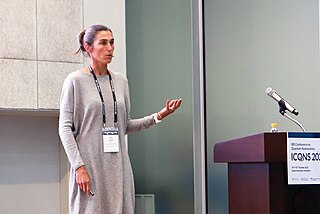
Ania Bleszynski Jayich is an American experimental physicist most known for developing novel sensing techniques that shed light on important biological, condensed matter, and quantum mechanical systems. Bleszynski Jayich is the Bruker Endowed Chair in Science and Engineering in the Department of Physics at the University of California, Santa Barbara and Associate Director of the campus’s Materials Research Lab.
Pablo Jarillo-Herrero is a Spanish physicist and current Cecil and Ida Green Professor of Physics at Massachusetts Institute of Technology (MIT).
Vedika Khemani is an Indian-American physicist and Associate Professor of Physics at Stanford University. Her research lies at the intersection of many-body quantum condensed matter physics and quantum information theory.

Bernhard Mistlberger is an Austrian theoretical particle physicist known for his significant work in the area of quantum field theory. He is known for multi-loop calculations in quantum chromodynamics (QCD), including the first high-precision theoretical predictions of Higgs and vector boson production at the Large Hadron Collider.
Daniel Harlow is the Jerrold R. Zacharias Career Development Associate Professor of Physics at the Massachusetts Institute of Technology.
References
- 1 2 "Laureates: Andrea Young". Fundamental Physics Breakthrough Prize. Retrieved 2020-06-17.
- 1 2 Yu, Christine (2018). "Prizewinner Andrea Young '06 is Expanding Physics' Horizons". Columbia College Today. Retrieved 2020-06-17.
- ↑ "MIT Pappalardo Fellowships in Physics: Lists of Current, Incoming and Former Fellows". MIT Department of Physics. Retrieved 2020-06-17.
- ↑ "McMillan Award". Illinois Physics. Retrieved 2020-06-17.
- ↑ Estrada A, Cohen J (23 October 2016). "UCSB Physicist Andrea Young Receives 2016 Packard Fellowship". Noozhawk. Retrieved 2020-06-17.
- ↑ Fernandez, Sonia (20 March 2016). "Sensing Potential". The UCSB Current. Retrieved 2020-06-17.
- ↑ Fernandez, Sonia (22 February 2017). "New Research Horizons". The UCSB Current. Retrieved 2020-06-17.